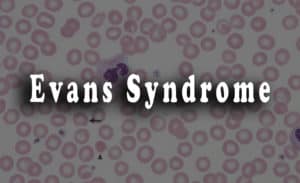When asked about asthma vs COPD, people often think both are the same. Well, it is a misconception.
Asthma is an obstructive lung disease. It is characterized by inflammation in the airways causing the airways to become narrow and produce mucus.
There is shortness of breath and the presence of wheeze (producing whistling sound during breath out) during asthma attacks. Tightness around the chest is also common. These attacks are triggered by various allergens/dust/pollen and environmental factors.
Commonly It is diagnosed in childhood. But it can affect people of any age.
Symptoms
- Cough
- Shortness of breath
- Wheeze
- Tightness of chest
- Hyperventilation
- Increased heart rate
Triggering factors
- Exercise may increase asthma symptoms, especially in exercise-induced asthma.
- Respiratory diseases such as pneumonia, viral illness can trigger asthma attacks.
- Allergens such as fur of pets, dust mites, dander of animals, pollen all these things can trigger asthma.
- Irritants present in the air such as strong odors, chemical fumes, smoke increase asthma attacks.
- High humidity and low-temperature weather both can trigger asthma.
Types of asthma
- Occupational asthma
- Exercise-induced asthma
- Extrinsic asthma (Allergy induced asthma)
- Intrinsic asthma (Non-allergic asthma)
- Cough variant asthma
- Nocturnal asthma
- Aspirin-induced asthma
Diagnosis
- By its diurnal variation means symptoms aggravate during sleeping or symptoms get worse during the night.
- Peak flow test – during an asthma attack reading of the peak flow meter will be less than 50 percent of the usual peak flow reading.
- Methacholine challenge test to know your triggering factors.
- Exhaled nitric oxide test to know if your airways are inflamed or not.
- Chest X-ray
- Sputum eosinophil test
- Allergy test
- CT scan of lungs.
Treatment
Management of asthma can be done stepwise:
Step 1:
- For new patients diagnosed with asthma – a Short-acting beta-agonist (SABA) is suggested.
Step 2:
- If not controlled with the previous step or patient with newly diagnosed asthma with symptoms more or equal three weeks or patient who wakes up due to night time waking – both short-acting beta-agonist and low dose inhaled corticosteroid (ICS) is given.
Step 3:
- If not managed then SABA low dose inhaled corticosteroids + Leukotriene receptor antagonist (such as montelukast, zafirlukast) all are given by doctors.
Step 4 :
- SABA + low-dose ICS + long-acting beta agonist (LABA)
- Continue LTRA depending on the patient’s response to LTRA
Step 5:
- SABA +/- LTRA
- Switch ICS/LABA for a maintenance and reliever therapy (MART), that includes a low-dose ICS
Step 6:
- If not controlled SABA + (leukotriene receptor antagonist may or may not be required + medium-dose inhaled corticosteroids as maintenance and relieving therapy.
Step 7:
- If not managed then the following regimen can be given:
- LABA +/- Leukotriene receptor antagonist + one of the following medications can be given:
- Increase inhaled corticosteroids to a higher dose only as a part of a fixed-dose regimen, not as maintenance and relieving therapy.
- A long-acting muscarinic receptor antagonist or use of theophylline can be given as a trial.
- Apart from this consult with a pulmonology specialist about your condition.
Complications
Asthma can lead to various complications such as-
- Narrowing of bronchial tubes
- Pneumonia
- Lung collapse
- Respiratory failure
COPD
COPD means chronic obstructive pulmonary disease. It is a group of lung diseases that cause respiratory problems. COPD is also a serious disease.
Chronic obstruction of airflow due to the inflammation of airways which leads to breathing difficulty is known as COPD. Shortness of breath, wheezing both can occur in COPD and asthma.
It is a long-term disease and it is a progressive condition that can hamper your daily activities.
You cannot completely cure COPD but can prevent it from going worse. Avoid smoking and other risk factors to help you to prevent its progression.
Cause
COPD is caused by long-term exposure to lung irritants such as cigarette smoking, toxic chemical fumes, or due to genetic reasons such as alpha -1 – antitrypsin deficiency.
Types
- Emphysema
- Chronic bronchitis
Sign-symptoms
- Breathlessness, especially during active hours.
- Persistent cough.
- Produce mucus.
- Cyanosis (bluish coloration of fingernail beds, lip, etc)
- Swelling in feet, ankles, legs, and frequent chest infections.
Diagnosis
- Taking family history
- Occupational history such as chemical fumes exposure present or not, besides taking personal history such as any habit of smoking present or not.
- Lung function tests such as spirometry are done.
- Chest x-ray, CT scan can be done to see emphysematous change.
- Arterial blood gas test to determine the severity of the disease.
- Alpha antitrypsin deficiency test.
Treatment
- Advise stopping smoking.
- Give the influenza vaccine.
- Use pneumococcal vaccination.
- Pulmonary rehabilitation is advised to those who are disabled by the effect of COPD.
Specific management
First-line treatment: Short-acting beta 2 agonist or short-acting muscarinic antagonist can be given.
Patients remain breathless or have any form of exacerbation despite using short-acting bronchodilators. Further management is dependent upon if the patient has asthmatic features or features suggesting steroid responsiveness.
- A) If the patient has Asthmatic features or features suggesting steroid responsiveness:
- A Long-acting beta-agonist and inhaled corticosteroid are prescribed.
- If the patient has any exacerbation or remains breathless suggest triple therapy. They are Long-acting muscarinic antagonists + Inhaled corticosteroids + Long-acting beta-agonists.
- If a patient is taking a long-acting muscarinic receptor antagonist already then stop the drug and use a short-acting beta-agonist instead.
B) If the patient has no asthmatic features or features suggesting steroid responsiveness:
Prescribe long-acting beta2 agonist and long-acting muscarinic antagonist both.
If they are taking a short-acting muscarinic antagonist you may discontinue it and rather give a short-acting beta-agonist.
Before taking any medicine you must consult a good pulmonologist and follow his advice regularly.
- Oxygen therapy is required by some of the patients.
- Consider steroid use such as prednisolone 30 mg per 24 hours for 2 weeks if FEV1 rises by fifteen percent then we can say COPD is steroid-responsive and benefit can be achieved by using long-term inhaled corticosteroids.
- Surgical option- Lung transplant surgery, bullectomy can be done to improve breathing problems as well as improve daily life sufferings.
Complications
Some of the complications are Respiratory infections, heart problems, lung cancer, and the presence of high blood pressure in the arteries of the lungs.
A brief outlook of Asthma vs COPD
- Asthma is usually attacks of chest tightness and wheezing, shortness of breath.
- On the other hand, COPD is a persistent condition that produces chronic cough and phlegm and causes breathing difficulties. People with COPD often have bluish discoloration of fingernail beds.
- Asthma can be triggered by an allergen, pollen, dust material.
- On the contrary, COPD is a group of conditions in which inflammation of the lungs occurs and alveoli are damaged most commonly due to smoking.
- Asthma can get better, your symptoms can go on and off.
- On the other hand, COPD is constant. you will have your symptoms and they can go worse over some time.
- Symptoms of asthma usually start during childhood but you can get asthma at any age of your life.
- But COPD usually affects the middle age of life or the older population.
- Breathing can get better between two asthma attacks, on the contrary, breathing problem doesn’t go normal in COPD.
- The Causes of COPD and Asthma are both quite different.
- People with type -2 respiratory failure Asthma are triggered by exposure to certain kinds of allergens like dust, pollen, pet hair, cold air, physical exercise, smoking, and certain medicines such as aspirin, beta-blocker, stress. These things can vary from person to person.
- A common cause of COPD is smoking. Exposure to fumes of burning fuels used for both cooking purposes or chemical reasons can contribute to the development of COPD. Some genetic factors such as alpha 1 antitrypsin deficiency can cause COPD. Besides respiratory tract infections can also aggravate COPD.
- Diagnostic criteria and treatment protocol both are different in Asthma and COPD.



